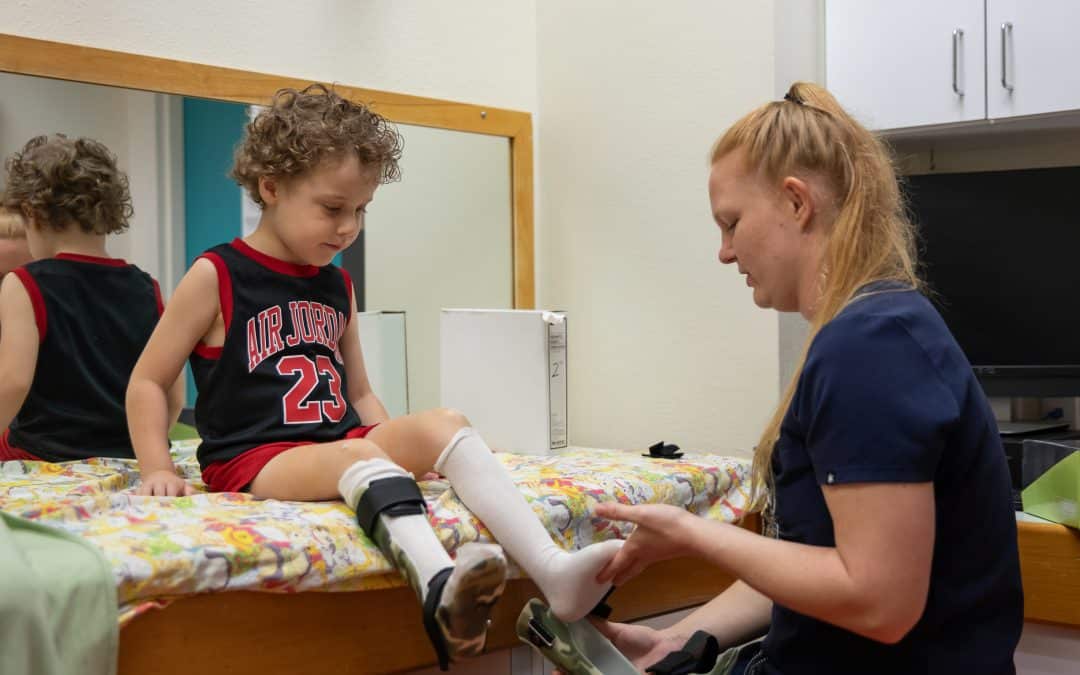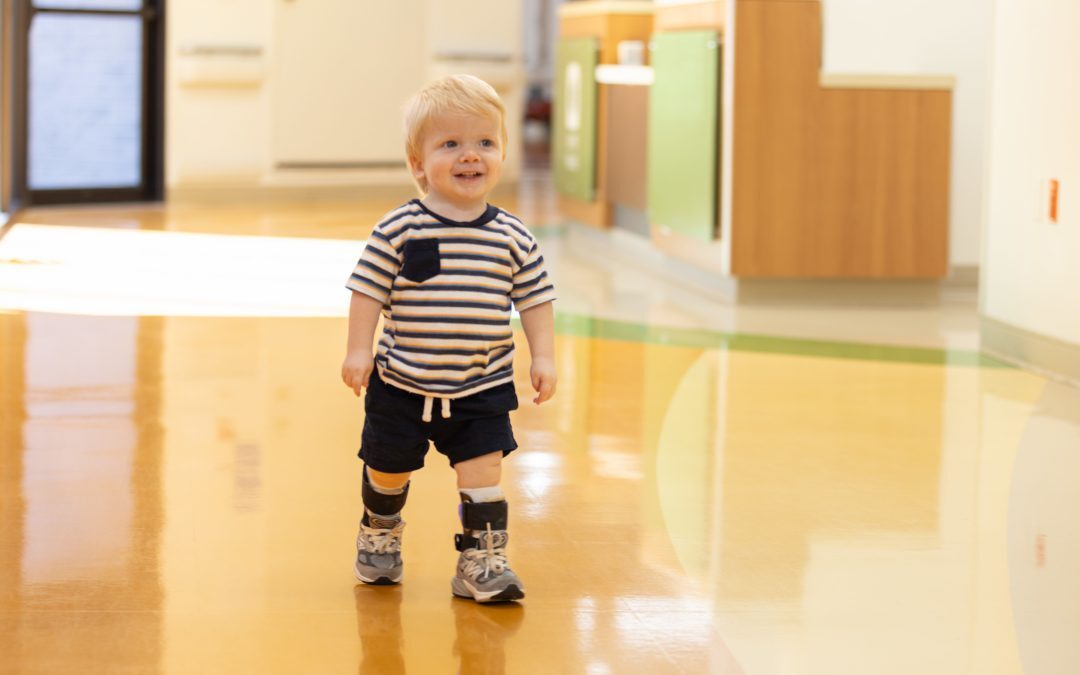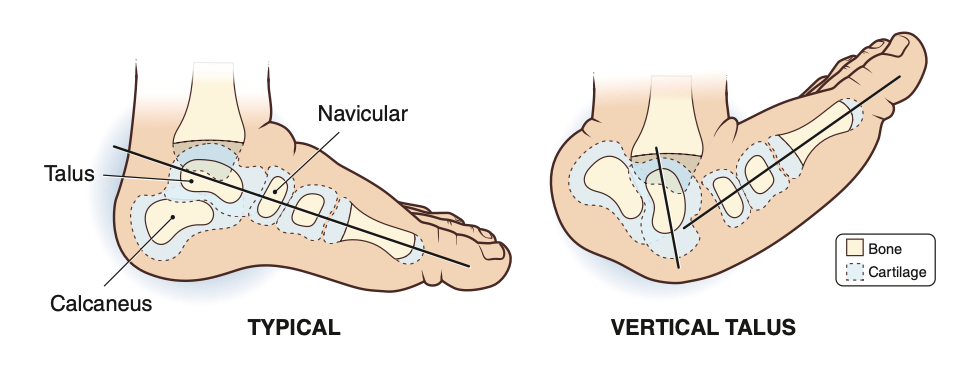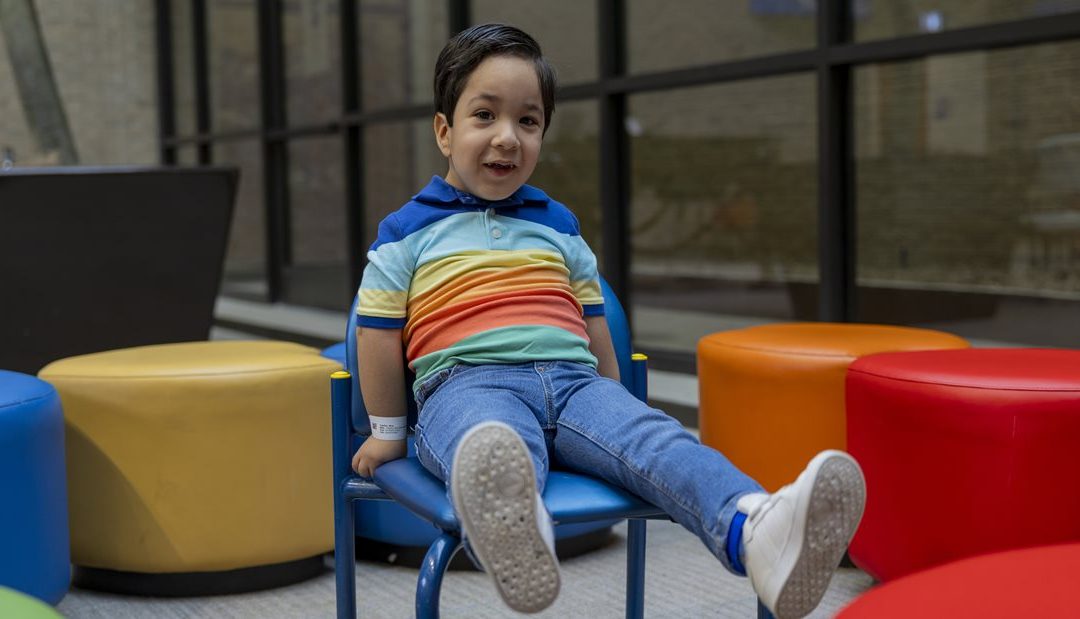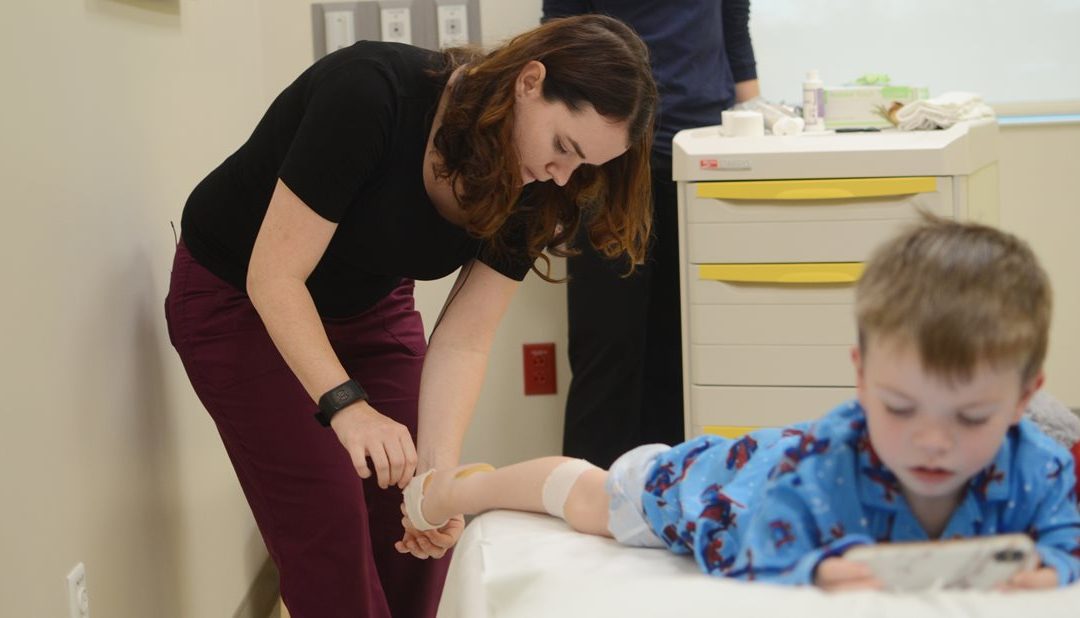Plantar fascia is tissue that stretches across the bottom of the feet. The tissue connects your heel to your toes. This tissue, along with other muscles and tendons, forms the arch of the foot. A long plantar fascia is present in lower arched feet, while higher arches have a shorter plantar fascia. Though many children with high arches (also known as a cavus foot deformity or pes cavus) have no issues or discomfort, this deformity can lead to foot pain in certain instances.
At Scottish Rite for Children, experts in the Center for Excellence in Foot are committed to improving the lives of children and adolescents with a variety of complex foot conditions through world-class, individualized care. Here’s what you should know to help your child manage their high arch to enjoy an active and healthy life.
Recognizing When Your Child Has Cavus Foot
Foot arch deformities, such as high arches, typically develop after age 3. Once high-arched feet develop, the pressure distribution along the bottom of the foot is altered, typically with increased pressure along the forefoot pad and sometimes the outer boarder of the foot. These deformities can be supple or rigid depending on the flexibility present across the arch and foot as a whole.
Whether the arch is flexible or rigid, issues related to pes cavus include:
- Shortened foot length
- Development of calluses on the ball, side or heel of the foot
- Dragging the affected foot when walking (foot drop)
- Foot pain that occurs when standing, walking and running
- Frequent ankle sprains
- Problems fitting feet into shoes
- Significant space between the ground and the arch of the foot when standing
- Toes clenched like a fist (claw toes) or bent (hammertoes)
- Walking primarily on the heel and ball of the foot instead of using the whole foot
If you suspect your child has high arches, seek medical attention. These deformities are often related to an underlying neurologic problem, can be progressive and may result in foot pain and disability.
What Arch Height Means
High arches are the opposite flat feet and don’t always cause foot or arch pain, ankle instability, or other problems. In fact, some young people with high arches don’t experience any effect on their quality of life. These children may benefit from conservative treatment or no treatment at all.
In other cases, a high-arched foot may indicate a neurologic problem or other serious health issue. According to the American College of Foot and Ankle Surgeons, conditions that may cause high-arched feet include:
- Cerebral palsy
- Charcot-Marie-Tooth disease and other hereditary neuropathies
- Structural orthopedic abnormalities
- Muscular dystrophy
- Spina bifida
What to Do If Your Child Has High Arches
An accurate diagnosis helps uncover a potential neurologic issue causing high arches. To make a diagnosis, your child’s provider may do the following:
- Discuss your child’s personal and family health history and symptoms
- Evaluate your child’s foot, walking ability, coordination, neurologic system and how your child’s shoes wear over time
- Take X-rays for a clear view of the foot bones
If a child’s high arches are rooted in a neurologic condition, his or her provider may examine the entire leg and obtain other tests, such as genetic bloodwork, brain and spine magnetic resonance imaging (MRI) and/or nerve conduction studies which look for slow, weak signals in your child’s nervous system.
Treatments for Cavus Foot
No treatment may be needed if your child’s high arches are flexible or don’t affect quality of life. On the other hand, proper treatment for symptomatic high arches reduces symptoms and prevents future complications.
The goal of conservative treatments for high arches is to relieve pain and support the foot. Options include:
- Different shoe choices. Sometimes, all that’s needed is the right pair of shoes for different orthopedic needs. Shoes with wider heels and more support may improve stability of your child’s foot and ankle as well as reduce pain.
- Foot braces. A specialized brace can help manage foot drop. It also provides extra support for the foot and ankle that helps reduce symptoms of high arches.
- Off-the-rack shoes may not have the interior support needed for high arched feet. Custom orthotic devices provide added cushioning and support.
When conservative treatments don’t give children improved stability and reduced pain, surgery may be necessary. The goal of surgery is to flatten the foot by lowering the arch. Surgical options include:
- Bone realignment. The surgeon cuts and properly realigns bones. Known as an osteotomy, this procedure may treat one or more bones in the foot.
- Fusion procedures. Joint movement in the foot can cause pain with high arches. Fusing the joints together can help reduce or eliminate joint movement and pain.
- Plantar fascia release and tendon transfer surgery. If a problematic high arch stems from the plantar fascia, a surgeon can release the tissue. If other muscles or tendons cause the arch, a surgeon can release or move those muscles or tendons to provide more balanced control of the foot.
Specialized treatment options may be recommended for high arches associated with underlying health conditions.
Can Kids Outgrow High Arches?
Without treatment, acquired high arches are likely to remain in place throughout life and, if due to an underlying neurologic cause, may get worse. In the absence of an underlying nerve or muscle condition, high arches typically do not become more severe. As your child gets older, consult his or her provider about any changes in your child’s foot health.
Does your child have high arches, flat feet or other foot abnormalities? Find a foot expert at Scottish Rite for Children for an accurate diagnosis and appropriate treatment plan.





